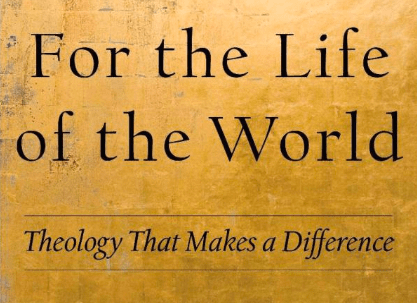When theology is reframed for a flourishing life what does it look like?
Miroslav Volf and Matthew Croasmun, in For the Life of the World, present a sketch of an answer in their last chp under two major categories: form and content. We look at form today.
… the Christian faith offers a specific account of the character of the transcendent realm and how it relates to the mundane, a particular vision of God and the relation between God and the world: (1) the mundane realm has its origin in the God of love (creation); (2) having become captive to Sin. human beings live as if they and the world they inhabit were other than they truly are (sin); (3) nevertheless, the God of love has come to inhabit the mundane realm (incarnation and salvation) and (4) the mundane realm has its telos in the “new Jerusalem, the city of the one true God, the full realization of which lies in the eschatological future (consummation).
They know that Paul is not as keen on kingdom as Jesus. Kingdom eschatology, however, is, and they find a perfect term in the term perfect.
Teleios, meaning “perfect” or “mature.” It is the single term that describes both the consummated reality (the “perfect’ or “complete”)[the future] and lives lived into that eschatological hope and energized by its partial realization (the “mature”)[the present].
They call this inaugurated eschatology “advent.”
Taken together, these two interlocking senses of the teleios give Paul’s vision of the good life what we might call an “advent structure”; fully consummated life is entering into this world, norming this life and partly realizing itself proleptically in this life even as its full realization remains impossible under present conditions.
The church is marked as that community able to discern the teleios that is, able to discern the vision of fully flourishing life toward which, in the power and under the guidance of the Spirit, its members improvise life under conditions partially unfitting to it.
Recognizing the distinction between creation and the consummation as well as between fallen creation and consummation. Thus, at the heart of their project is inaugurated eschatology, the now and the not yet, as the tension of life now.
We are to live now — imaginatively — into the not yet.
In light of the soon-no-longer-but-nevertheless-still presence of these unfitting conditions (“the form of this world”) and the opposition they present, the Corinthians have to improvise lives in the context of considerable tension.
How do we live this out?
Fi rst, we must construe the world as created good by God, meaning that material goods are not merely things but relations, gifts from the God of love, given equally to all.
Second, we ought to see the world as malformed by sin, recognizing how the world is broken, especially how ungodly power has distorted the world and enthroned its distortions as “natural,” apparently usurping the rightful priority of creation.
Third, we ought to construe the world as the site of God’s indwelling in the person of Jesus Christ, seeing the redemption of all things currently and incompletely underway.
Finally, we must construe the world as destined for eschatological consummation, seeing the world both in hope and with sober awareness that the world is not yet what it will one day be.











